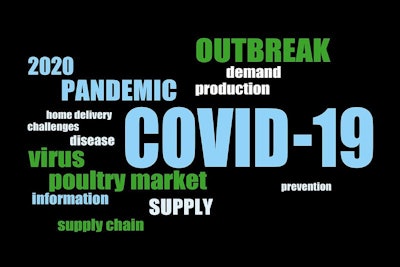
Collaborative robotic technology could help future-proof poultry processing against COVID-19 by minimizing the number of repetitive tasks required to be performed manually by workers.
Three robotics and technology experts shared insights on how collaborative automation can build resilience and reduce risk during Manufacturing: The Next Generation — Through Collaborative Automation. The discussion, hosted by the Association for Advancing Automation (A3) on November 19, 2020, featured:
- Mark Cuban, CEO of Dallas Mavericks, founder of Shark Tank
- Enrico Krog Iversen, CEO, OnRobot
- Rob Goldiez, CEO and Co-founder, Hirebotics Robotics
Where do they fit in processing?
Collaborative robots, also known as cobots, are designed to work safely alongside human workers. Typically, the robot is responsible for any repetitive task, freeing up the human worker to perform more complex, thought-intensive tasks.
“We’ve seen over the years that there’s clearly an interest in automation and robotics. But there’s a fear of something new. Some companies go too far. They want to automate everything. I always advise people to start with the simple, the easy, the dull. Go with the things that your people are always complaining about doing,” said Goldiez.
“Let the humans do the human work and let the robots do the robot work.”
Why now?
The poultry and meat processing industry – along with many other jobs that require repetitive manual labor – had already been moving toward automation. The COVID-19 pandemic accelerated that trend.
“If we look at it from a COVID-19 perspective, there are two things that will really drive automation forward and upward. First, with the collaborative applications, you can maintain your social distancing,” explained Iverson.
“But I think what we will also see, and are already starting to see, is that a lot of companies were too dependent on one or two suppliers in one region of the world. I think what you’ll see is that a lot of companies are rethinking their supply chain strategy and when they do that, they will also spread their manufacturing out.”
A number of meat and poultry plant were forced to temporarily close this spring in an effort to stop the spread of the virus.
“When you look at what’s been happening during the pandemic, we’ve had to adjust. There are so many changes in how consumers consume and how manufacturing is being looked at. I think this change has created an opportunity for world-class companies to be creative,” Cuban said.
View our continuing coverage of the coronavirus/COVID-19 pandemic.
Like what you just read? Sign up now for free to receive the Poultry Future Newsletter.
















